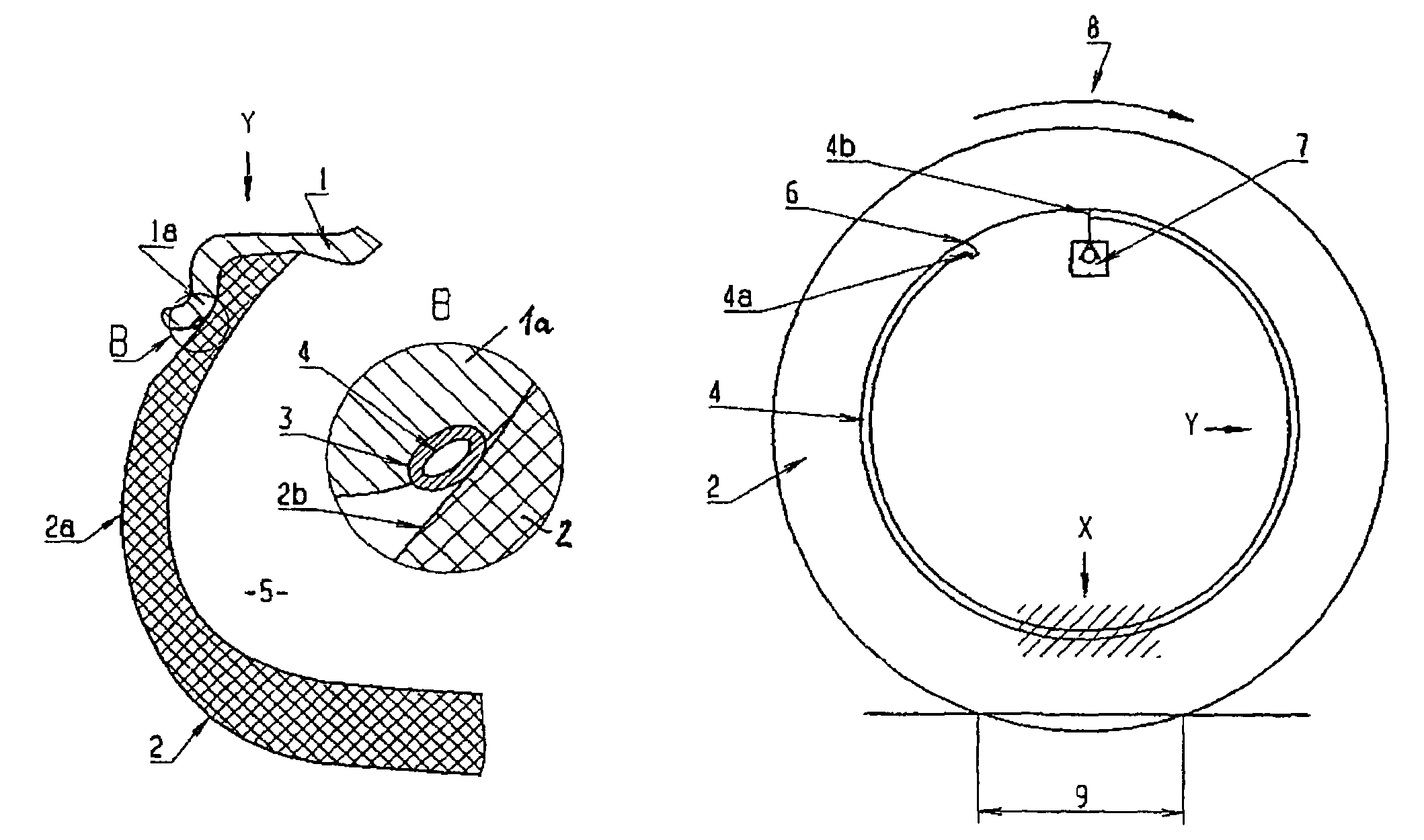Arrangement for filling air into a rotating pneumatic tire
a technology of rotating pneumatic tires and air filling, which is applied in the direction of tyre repairing, vehicle components, tire measurement, etc., can solve the problems of high constructional expenditure, easy to be neglected or forgotten, and high cost of filling by means of controllable valves, so as to reduce the strength of side walls or bead chamfer bulges and lose air sealing ability.
- Summary
- Abstract
- Description
- Claims
- Application Information
AI Technical Summary
Benefits of technology
Problems solved by technology
Method used
Image
Examples
Embodiment Construction
[0014]Reference number 1 indicates the rim of a vehicle wheel on which a tire 2 is mounted in a conventional manner. In the rim flange 1a of the rim 1, a surrounding duct 3 is provided on its surface pointing essentially in the radial direction toward the outside, in which duct 3 a hose-shaped structure 4 in the form of a hose (also reference number 4) is inserted and extends over a large portion of the circumference. The first end 4a of the hose 4 is situated in the environment, somewhere inside the rim, that is, radially within the rim well, while the second end 4b of the hose 4 by way of a check valve 7 leads finally into the tire interior or is connected with the latter. In this case, the tire 4 itself can lead into the tire interior 5 and thus radially outside the rim well. However, as an alternative, the hose 4 can also lead directly into an otherwise essentially conventional tire valve which is not shown in the figure and is provided for the regular filling of air into the ti...
PUM
 Login to View More
Login to View More Abstract
Description
Claims
Application Information
 Login to View More
Login to View More - R&D
- Intellectual Property
- Life Sciences
- Materials
- Tech Scout
- Unparalleled Data Quality
- Higher Quality Content
- 60% Fewer Hallucinations
Browse by: Latest US Patents, China's latest patents, Technical Efficacy Thesaurus, Application Domain, Technology Topic, Popular Technical Reports.
© 2025 PatSnap. All rights reserved.Legal|Privacy policy|Modern Slavery Act Transparency Statement|Sitemap|About US| Contact US: help@patsnap.com


